
The Yorkville Enquirer of Oct. 4, 1893 reported the property of the Kings Mt. Military School has been declining for years. The Baptist have purchased the building and are rehabilitating it as a graded school for boys. It will be in charge of Rev. R.H. Griffith. “Courtesy of the Davie Beard Collection – 2017
“The antebellum military school for boys, becomes a S.C. orphanage.”
The Yorkville Enquirer contained an ad on May 19, 1870 for the KMMA. It included a photograph of the building and addressed the studies, financial terms, uniforms and discipline. The faculty included: Col. A. Coward, Lt. James A. Watson, John S. Reynolds, and C.E. Spencer. The first session begins Feb. 1st and second session July 1st.
City Directories and History: This site was originally the location of Matthew Dickson’s Tavern, and legend has it that the town of Yorkville was created in that establishment. In 1857 it became the location of the Kings Mountain Military Academy
(KMMA), established by Citadel graduates Micah Jenkins and Asbury Coward. (The facility cost some $20,000. to construct and began with twelve students.) It was considered a leading preparatory school in the Southeast. The school suspended operation during the Civil War, when both founders became Confederate officers.
Jenkins rose to the rank of Brigadier General, but died at the Battle of the Wilderness when his own troops mistook him for the enemy. Colonel Coward re-opened the school after the war, and operated it until he became the President of The Citadel. In 1909, the abandoned KMMA buildings attracted The Episcopal Church
The Yorkville Enquirer reported on Jan. 9, 1873 – “The KMM School will begin its 8th annual session since the war on Feb. 1st. The school has added another year of study and an instructor of German will also be added.”
The Yorkville Enquirer reported on May 22, 1873 – “Mr. James A. Watson, a prof., in the KMMA, has accepted a position in Baltimore at the Bryant, Stratton and Sadler Business College.”
The Yorkville Enquirer contained a sketch of the history of the KMM School taken from the Columbia Register, on July 11, 1878 – “Founded in 1855 by two young graduates of the Citadel, Gen. Micah Jenkins and Col. Asbury Coward. They were both in the late war. Mrs. Coward supervises the food. The prof., include: William Currell, a graduate of the S.C. College.”

Dorm at the Kings Mountain Orphanage. Courtesy of the AFLLC Collection – 2017
The Herald reported on Aug. 4, 1881 – “The cadets at the KM Military School recently contributed $13.63 to the fund for erecting a monument to the memory of Gen. Micah Jenkins.”
The Yorkville Enquirer reported on Jan. 2, 1879 – “Prof. Gonzalez, the imminent musician, will remain in Yorkville a few days to tune pianos and organs. He has to date tuned and repaired several instruments, including the pianos of: Mr. H.F. Adickes, Col. Coward, and Dr. Kuykendal and the organ of the Episcopal Church. He can be found at the Rose Hotel.”
On Dec. 7, 1882 the Herald reported – “Col. Coward, the principal and prop., of the KMS has secured Gen. E.M. Law as associate principal.”
The Yorkville Enquirer reported on May 6, 1891 – “Col. A. Coward has been invited to deliver an address at the closing exercises of the Williston Graded School.”
The YV Enquirer reported on June 28, 1893 – “A special committee representing the York Baptist Association in the purchase of the KMM School building for use as a Baptist High School will call a general meeting to secure an agreement.”
The Yorkville Enquirer for Sept. 29, 1893 reported work on converting the old Kings Mt. Military School building for use as a Baptist High School is moving rapidly. Mr. Dover is doing the work. Some portions of the roof were collapsing and the work should be completed in two months. The Baptist High School committee has produced a handsome four page circular for the school. Sam M. Grist is Sec. of the Board of Trustees.”
The Lancaster Ledger of Dec. 20, 1893 reported, “The first session of the Baptist High School will open on Jan. 3, 1894. The building has many classrooms and accommodation for 100 boarders. Workman are now repairing the building. Sam M. Grist is the Sec. of the Board of Trustees.”
The YV Enquirer reported on Sept. 19, 1894 – “The opening day for the new Baptist High School of Yorkville is set for Tuesday Sept. 25th. The faculty will be: A.E. Booth – Pres., A.T. Von Shulz, W.W. Dixon, H.H. Savage, George Walker, and Mrs. A.E. Booth.”
The Herald reported on Dec. 5, 1896 – The Baptist High School at Yorkville, S.C. – “Rev. W. J. Langston reports the Baptist have purchased the school property for $6,000. They were to make two payments and failed to make the second. They are now being sued by the seller and are seeking to raise additional funds…”
The Rock Hill Herald reported on March 3, 1900 – “Prof. B.A. Davis, Jr., Pres. of Virginia Business College at Richmond, has leased the old Kings Mountain Military School buildings and proposes opening a military and business college.
The RH Herald reported on June 6, 1900 – “The new military school will open this fall in the old Kings Mountain Academy buildings. Colonel Beverly A. Davis and W.G. Stevenson of Richmond are making the arrangements. It will be a military academy similar to that conducted by Colonel Coward but will also office commercial and stenographic courses.”
The Rock Hill Record reported on Nov. 22, 1908 – “At a meeting of the Episcopal Home and Orphanage on Friday in Charleston, it was decided to move the orphanage to Yorkville and to keep the ladies home in Charleston. Yorkville made the best offer and was chosen over Greenville, Winnsboro, Greenwood, and Spartanburg. The buildings of the old Kings Mountain Military Academy, eleven acres of land and $5,000. in cash were made available by the City of Yorkville. The academy was founded by Gen. Micah Jenkins and Col. Asbury Coward.”
The Rock Hill Record reported on Feb. 8, 1909 – “Trustees of the Episcopal Church Home Orphanage met in Yorkville and gave final approval to the purchase of the Kings Mountain Military School property.”
The RH Record reported on May 13, 1909 – “Children of the Episcopal Church Home left Charleston on Tuesday for Yorkville, where the property of the old Kings Mountain Academy has been acquired. There are 44 rooms and 4 brick buildings on the twenty-four acres. Electric lights have been installed and the home will have an infirmary. Yorkville will provide free light and water for ten years and expect to house about sixty orphans.”
The Herald reported on April 5, 1940 – “A service has been held to dedicate the Good Shepard Chapel at the Episcopal Orphanage in York. Funds for building the chapel were made available in large part by a gift from Rev. O.T. Porcher and family.”
Rock Hill architect, Mr. A.D. Gilchrist was paid for drawing plans for the York Orphanage in 1941 and 1942. It is unclear what this work entailed. Courtesy of the WU Pettus Archives – 2024
The Rock Hill Herald of Jan. 9, 1942 reported – “Fire has destroyed the home of F.D. MacLean, Supt. of the Episcopal Home orphanage of York. The home was on the grounds of the orphanage.
MICAH JENKINS AND THE 5TH S.C. VOLS. by Louise Pettus Micah Jenkins and Asbury Coward were 19-year-old honor graduates of the Citadel when they came to Yorkville in 1855 to set up a military academy to serve as a preparatory school for the Citadel. Their school, established as Yorkville Preparatory School and with an initial enrollment of 12 boys, grew, and with local support, expanded.

Courtesy of the AFLLC Collection – 2017
In 1857, Coward and Jenkins opened the immensely successful Kings Mountain Military Academy. In 1861, the Civil War broke out and the two young officers closed their school to report for duty. Jenkins became commander of the Carolina Sharpshooters and, not quite 25 years of age, was advanced to the rank of brigadier-general.
In 1864 at the Battle of the Wilderness, Micah Jenkins was mistakenly shot by one of his own men. The way that Yorkville learned of Jenkins’ death is vividly described in “We the People,” a booklet published by the York Bicentennial Committee in 1976: “Poignant indeed was Colonel Coward’s description of the last hours of his beloved friend. The train coming up from Chester usually announced the news by blasts of its whistle. Short, rapid toots from the whistle meant good news and long, doleful ones indicated that the news was bad. On one particular day, the train whistle wailed the entire trip up from Chester and by the time it pulled into the Yorkville Station the town’s entire population was waiting anxiously to hear the news. General Jenkins’ young wife and her children were there in their carriage when the news was announced that he was killed.”
In language typical of the time, the Yorkville Enquirer obituary of May 11, 1854, expressed the loss of Jenkins in this manner “The gallant Jenkins has fallen in the prime of manhood, amid the clash of victorious arms; in the midst of battle, like Henry Navarre, his plume was still to be seen, but alas, the fatal shaft was sped, and the brave soldier fell another sacrifice on the altar of his country.” Jenkins, a native of Charleston District, was buried at Summerville, S. C.

Farm display via the York Children’s Orphanage – Unknown date.
Many of the men who were members of Jenkins’ 5th Regiment, South Carolina Volunteers, were native of York District Co. F, also known as the Kings Mountain Guards, was largely composed of Clover men. In 1902, the Yorkville Enquirer published a list of 117 men who had served in Co. F. The list showed the names of 38 who lost their lives in the war at such places as Bull Run, Frazier’s Farm, Gaines’ Mill, Seven Pines, the Wilderness, in Virginia and at Sharpsburg in Maryland and at Raccoon Mountain, Tenn.
In Co. A. of Jenkins’ Brigade was young J. J. “Jeff” Hagins, who later became Rock Hill’s first optician. When he was 91 years of age, Hagins was interviewed by the Evening Herald about his war experiences. Hagins remembered marching through Hagerstown, Maryland on a Sunday morning and seeing the people going to church as if nothing unusual was happening. Hagins said that he had gone into the war “for the fun of it” but that it was not long before he decided differently. One of his buddies tried to talk him into joining him in “allowing the Yankees to capture them”. That was too much for Hagins who decided to stick it out. The buddy died in battle the next day. Hagins was wounded in the hand at Lookout Mountain and was out of action for 3 or 4 months. He returned to his company and was captured at the battle of Gaines’ Mill in a strange way. He thought the Confederates were winning and when a detachment of northern troops came around the side of a hill and the commander called out “Come over here,” Hagins thought they were planning to surrender. Jeff Hagins and a man named Powell went over and “upon reaching the northern outfit they were disarmed and made prisoners.” Hagins was held prisoner for a time in New York and Delaware but was later exchanged. The next time he went north was in 1897 when he went to New York for a course in fitting glasses. Mr. S. E. Carroll Dead—Mr. S. Elzaphan Carroll died at his home six miles southwest of Yorkville. . . after a long period of failing health. Mr. Carroll was born in Bullock’s Creek township on November 10, 1831, and at the time of his death lacked but a few hours of having reached his 82nd birthday. He was one of the first York county volunteers at the beginning of the civil war, and on the reorganization of the army in April, 1862, became second lieutenant of Company B, 5th regiment. He was severely wounded at the battle of Sharpsburg, and was sent home; but returned to the front as soon as he was able to get about. Later he was slightly hit at Darby Road, but suffered no serious inconvenience on account of the wound. A farmer before the war, he continued to farm until by reason of advancing years he had to give up active life. He was married in the early 70s to Miss Margaret Gill, and is survived by one child, Mrs. P. C. Gascoigne, with whom he was living at his time of death. He also leaves one brother, Mr. Thad L. Carroll, who lives three miles east of Yorkville. The interment took place in Sharon cemetery yesterday after conducted by Rev. W. B. Arrowood. —Yorkville Enquirer, November 11, 1913…
Under the command of Colonel Micah Jenkins, the 5th SCV fought their first battle at First Manassas (Bull Run) on July 21, 1861, where the Federal army was routed. Three men of the regiment were killed, three wounded. The 5th stayed in the vicinity of Washington, D.C. , where President Jefferson Davis reviewed the men, and participated in several skirmishes. On November 11 it went into winter quarters at Camp Pettus near Centreville, Virginia.
On April 13, 1862 the 5th SCV was disbanded, but immediately reorganized as the famous Palmetto Sharpshooters under Colonel Jenkins. Another 5th was then formed as of April 22,1862, and those declining to follow Jenkins were enrolled in the “new” 5th. Most members of the original Company H, including David Johnston and my g-grandfather 4th Sgt Winfield Scott Traylor, were placed in newly organized Company B. Between April 1862 and May 6,1864 the 5th was commanded by Colonel John Giles, until his death at Seven Pines in May 1862, and then by Colonel Asbury Coward. During this twenty-three month period Company B fought in the following major battles: Yorktown, Williamsburg, Seven Pines, Gaines Mill, Frayser’s Farm, Second Manassas, Antietam (where there were more total casualties in one day than in any other Civil War battle), Fredericksburg, Siege of Suffolk, Chickamauga, Lookout Mountain, and the Wilderness. The 5th SCV was part of Longstreet’s Corps in Lee’s Army of Northern Virginia. In September 1863 Longstreet’s troops were rushed from Virginia to Tennessee and Georgia and in the next seven months fought five major battles. In April 1864 General Longstreet returned to Virginia. At the battle of the Wilderness, May 5 and 6, 1864, Corporal Johnston was wounded in the chin and mouth, and according to his account was left on die field to die. Company B’s captain, two lieutenants, five privates and Sgt Traylor were all captured. While David Johnston was being rescued and sent south, those captured were sent north to a military prison on Pea Patch Island in Delaware. After the Wilderness battle the 5th fought in several minor skirmished before ending up in the Petersburg trenches, where it remained until Lee’s final retreat. Colonel Coward surrendered what remained of the regiment at Appomattox Court House, Virginia on April 9, 1865. Results of The Wilderness fight for the 5th SCV was fifteen killed, twelve wounded and eight captured. [Editor’s Note: According to Joe Hart’s records, David Milton Johnston was born Feb 22, 1837 and died Apr. 27, 1832, aged 95 years. He was the son of David and Mary (Glenn) Johnston and married Martha Jane Thompson.)
Informative links: Asbury Coward, Asbury Coward Too, Micah Jenkins History, Micah Jenkins Grave
Stay Connected
Explore history, houses, and stories across S.C. Your membership provides you with updates on regional topics, information on historic research, preservation, and monthly feature articles. But remember R&R wants to hear from you and assist in preserving your own family genealogy and memorabilia.
Visit the Southern Queries – Forum to receive assistance in answering questions, discuss genealogy, and enjoy exploring preservation topics with other members. Also listed are several history and genealogical researchers for hire.
User comments welcome — post at the bottom of this page.
ASBURY COWARD, SOLDIER-EDUCATOR – by Louise Pettus
Asbury Coward came to Yorkville in 1854 to study law under the direction of William Blackburn Wilson, Esq., one of the leading lawyers of his day. Young Coward, who liked to sign his name “A. Coward,” was the son of a lowcountry rice planter and a recent graduate of the Citadel.
After only a couple of months, Coward decided against law as his life’s work. He was more inclined toward physical activity and preferred hunting, fishing and horsemanship to the indoors life of a lawyer. Coward persuaded a brilliant Citadel classmate, Micah Jenkins, to come to Yorkville. Together they founded Kings Mountain Military Academy in January 1755. Coward and Jenkins were both only 19 years of age. The academy was designed as a prep school for the Citadel. The first class had 12 students ranging in age from 11 to 16. The school quickly gained an excellent reputation both for its discipline and its academics. The five-year curriculum included mathematics through trigonometry, Latin, French, German, grammar, chemistry, astronomy, geology, physiology, history, English literature and philosophy.
By 1859 the Kings Mountain had handsome barracks, 10 instructors and 139 cadets. When South Carolina seceded from the Union, Coward and Jenkins both enlisted, and their academy, which had nearly 200 cadets, closed its doors. Jenkins formed the Jasper Light Infantry, the first unit to be raised in Yorkville for the Confederacy. Asbury Coward entered the Confederate Army as captain in the adjutant general’s department. He was soon transferred to the field where he was advanced to major after the Battle of Malvern Hill. A few months later he was made colonel in the 5th Regiment. Not all of Coward’s fighting was in Virginia. He was in the battles of Chickamauga, Chattanooga, Lookout Mountain and Knoxville plus a number of smaller skirmishes in die western campaign. At the end of the war Coward was with Lee at Farmville and Appomattox.
Following the surrender Coward returned to Yorkville with his wife and growing family. Coward had married Eliza Blum on Christmas Day 1856. Eventually the couple had 17 children and outlived all but one. Coward reopened the Kings Mountain Military Academy, but things were not as before. Micah Jenkins had been killed in the war. Not many families could afford a boarding school. The South was under military rule, and military cadets were not allowed to use rifles. Colonel Coward reluctantly closed the school’s days in 1886. For four years before closing the Academy, Coward also held the office of state superintendent of instruction. In 1890 Coward became superintendent of the Citadel in Charleston. The Citadel made great strides under the leadership of Coward who gained the respect and affection of every student body he ever commanded.
The effect of Coward’s work on education in general caused the University of South Carolina to award him the honorary degree of doctor of laws in 1896. President Theodore Roosevelt appointed Coward to the West Point Board of Visitors. Coward retired from the post of commandant of the Citadel in 1908. At that time he was awarded a Carnegie Pension for his service to mankind. The money allowed a “retirement in dignity.” A special delegation of Yorkville citizens went to Charleston in an attempt to persuade Coward to retire in Yorkville. They even promised him a cook and “a boy,” but the Cowards went to live with a child in Johnson County, Tenn., for a while. When he was 89 and she was 87, the Cowards returned to Yorkville to live the remainder of their lives. (Information courtesy of and from: YCGHS – The Quarterly Magazine – March 99)
Yorkville Enquirer, Thursday, January 10, 1861
Jasper Light Infantry preparing for service: List of Members
Jasper Light Infantry – 96 in the company preparing for active service. “Patriotic gentlemen” $1,300 raised for equipment. Jenkins recently went to Charleston to offer the unit to the governor and to get knapsacks, haversacks, canteens, fatigue suits, etc. Patriotic women volunteered to make uniforms. “They will represent the South Battalion of the 84th Regiment of South Carolina Militia, in the plan of the Legislature for raising ten thousand volunteers; and will be at once called into the field, when the time comes to drive back the invader of our soil.” Ladies have made a flag.
Officers: M. Jenkins, Captain; C. A. Seabrook, 1st Lt.; I. N. Withers, 2nd Lt.; E. B. Clinton, 3rd Lt.; Jas. Mason, 1st Sgt.; A. F. McConnell, 2nd Sgt.; S. C. Sadler, 3rd Sgt.; J. R. Witherspoon, Corp.; Wm. Dickson, Corp.; R. P. Smith, Corp.
Privates: J. P. Aycock, R. B. Adams, Jas. M. Adams, H. J. Allison, H. M. Asher, Jno. W. Beard, Jas. Black, F. Blankenship, N. B. Bratton, G. R. Burris, Robert M. Burris, J. T. Burris, J. E. Caldwell, J. W. Carroll, J. J. Coward, W. F. Davidson, William W. East, L. M. Elliott, Isaac Enloe, W. B. Enloe, A. R. Erwin, J. M. Farley, R. Foster, L. D. Goore, P. Baity Grist, J. L. Gwinn, S. Hagans, John Hagans, Frank. Happerfield, Thomas D. Harris, J. L. Harten, F. Hetherington, C. W. A. J. Hood, J. A. Hope, J. M. Howe, G. W. Jefferys, W. A. Jefferys, L. Jones, E. M. Kirkpatrick, R. C. Kuykendal, M. Leech, W. Lindon, M. S. Lindsay, [43 here, 43 in 1st column] D. J. Logan, D. M. Love, J. W. Love, S. M. Love, W. E. Love, J. D. McConnell, R. N. McElwee, D. C. McKinney, Jas. E. McKnight, J. T. McKnight, Jas. L. McLane, W. R. McNeel, S. B. Meacham, E. F. Meek, C. R. Moore, W. S. Moore, F. H. Mullenax, Jas. A. Neil, W. A. Neil, G. H. O’Farrell, R. R. Parish, John Parrott, H. J. Parker, W. W. Patterson, C. M. Pearson, David Pearson, T. C. Pinckney, B. C. Pressley, R. R. Robison, S. Sims, J. S. Simmons, L. Smith, J. B. Smith, W. B. Smith, J. G. Steele, Henry Saratt, J. J. Sutton, O. W. Torrence, John R. Wallace, O. L. Wallace, J. Walsh, C. K. Williams, J. P. Wilson. [43 in column 2, 43 in above list].
Yorkville Enquirer, Thursday, March 27, 1862
Colonel Jenkins sent W. W. East home to recruit for 5th
Col. Jenkins (5th Regiment) ordered William W. East, Cpl. Of the Jasper Light Infantry, to be in Yorkville ten or twelve days to recruits for either of the three companies from York in the 5th Regiment. The terms are two years or for the duration of the war with a $50 bounty and free transportation to camp. “Now is the time, gentlemen; a draft will be upon the District by the 15th April, unless you come forward, and meet the just and equal requisition of a bleeding country. See Advertisement.”
Please enjoy this structure and all those listed in Roots and Recall. But remember each is private property. So view them from a distance or from a public area such as the sidewalk or public road.
Do you have information to share and preserve? Family, school, church, or other older photos and stories are welcome. Send them digitally through the “Share Your Story” link, so they too might be posted on Roots and Recall.
ROSS VANBUREN BOLIN & HIS FELLOW SOLDIERS by Bob Bolin Ross Van Buren Bolin was the son of Manning and Nancy Westmoreland Bolin. He was the seventh of the sixteen children they had. He was born on 23 June, 1840, in Hickory Grove, York District, (now York County) S.C. He was 6.0 feet tall, a bit taller than the average man of that time, had dark hair, and blue eyes. His occupation, as shown in his military records, was “farmer” before joining the Army. He was married to the former Margaret Caroline Cobbs of Hickory Grove, daughter of James and Sara Cobbs. Of their two children, only my grandfather, James Ross Van Buren Bolin, survived. He was born August 23,1863, seven months after his father died. Manning and Nancy sent two other sons to fight for the Confederacy. Both survived, one of which was at Appomattox Courthouse when General Robert E. Lee surrendered his army, – such as it was – to General Ulysses S. Grant. At the beginning of the Civil War, one of the first regiments to be organized by order of Governor Pickens, and passed by the S.C. General Assembly on 17 December, 1860, was the 5th Regiment of S.C. Troops. It was originally, mustered into Confederate service at Orangeburg, SC, by Lt. Col. Barnard E. Bee, who is generally credited with giving Thomas J. Jackson his nickname, “Stonewall”. The regiment was officially mustered into service on 4 June, 1861. Its enlistment period was for one year. When that year was up, the regiment was disbanded. Those who were discharged either went home or re-enlisted in other units, mainly the Palmetto Sharpshooters, organized by then Colonel, and later, Brigadier General Micah Jenkins who, when the war began, was a resident of York, in York District, S.C. He, along with Colonel Asbury Coward, founded and operated Kings Mountain Military Academy, a military prep school that mainly prepared its students for study at the Citadel, as it is known today. Another 5th S.C. regiment was then immediately organized. At about this time the Confederacy enacted the conscript (draft) law because the South was having difficulty enlisting enough troops. Rather than be conscripted, which some thought a slightly dishonorable way to go into the army, Ross Van Buren Bolin enlisted at Yorkville upon arrival of the recruiting officer and fellow resident of York District, Captain Whitesides.
Upon enlistment, he was taken to Columbia, SC, and there, was mustered into service by Captain Witherspoon, also a York resident. Ross took his School of the Soldier at Lightwood Knot Springs, SC, also known as Camp Johnson, in honor of the president of the Charlotte and Columbia Railroad. This was a popular health resort in those days, and for some years after the Civil War, complete with warm healing springs on the grounds. The Confederate Military took it over and converted it into a training camp for new recruits. Light Wood Knot Springs still exists, although it is run-down and overgrown in most places. Its warm springs have long since disappeared, and its buildings have rotted away, and it bears no resemblance to the grand resort hotel it once was. It was located about seven to ten miles north of Columbia SC, near the Columbia to Charlotte railroad, now the Southern Railway, at a place called Dent’s Station. The property is now privately owned, and entry is difficult.

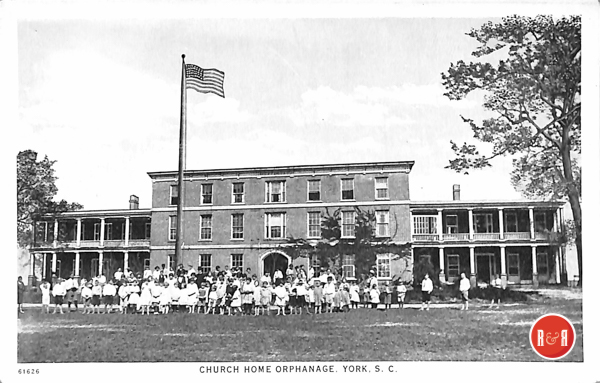
The two wings of the original building were designed as cottages for the owners of the military school and their families. Images courtesy of the AFLLC Collection – 2017
While on a visit to Madison C.H., Va., recently, I was detained 24 hours at Gordonsville, and being informed that many Confederate dead were buried there, I, in company with Rev. Dr. Handy and Rev. H. M. Linney, visited their neglected graves for the purpose of shedding a tear of sorrow over the resting place of my brave and honored countrymen, a tear of regret over a lost cause, and a tear of sympathy for the relatives and friends of those heroes of the South. We found these graves so much neglected, the head-boards so rotten, and the markings so defaced, that it is already impossible to read the names of many of them, so I thought it would be a good work to gather the names of all the South Carolinians I could find, and publish them for the benefit of friends. In a short time it will be impossible to find any particular grave.
User comments always welcome - please post at the bottom of this page.

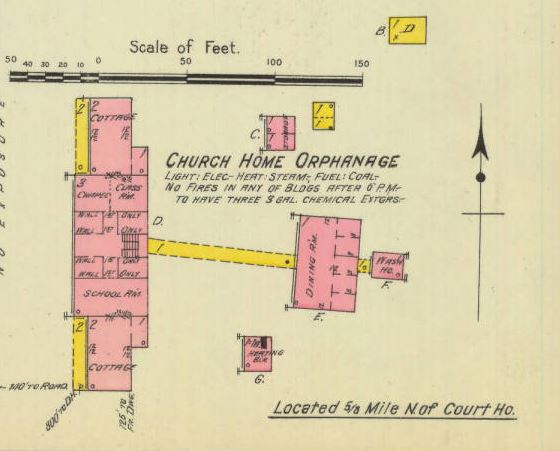

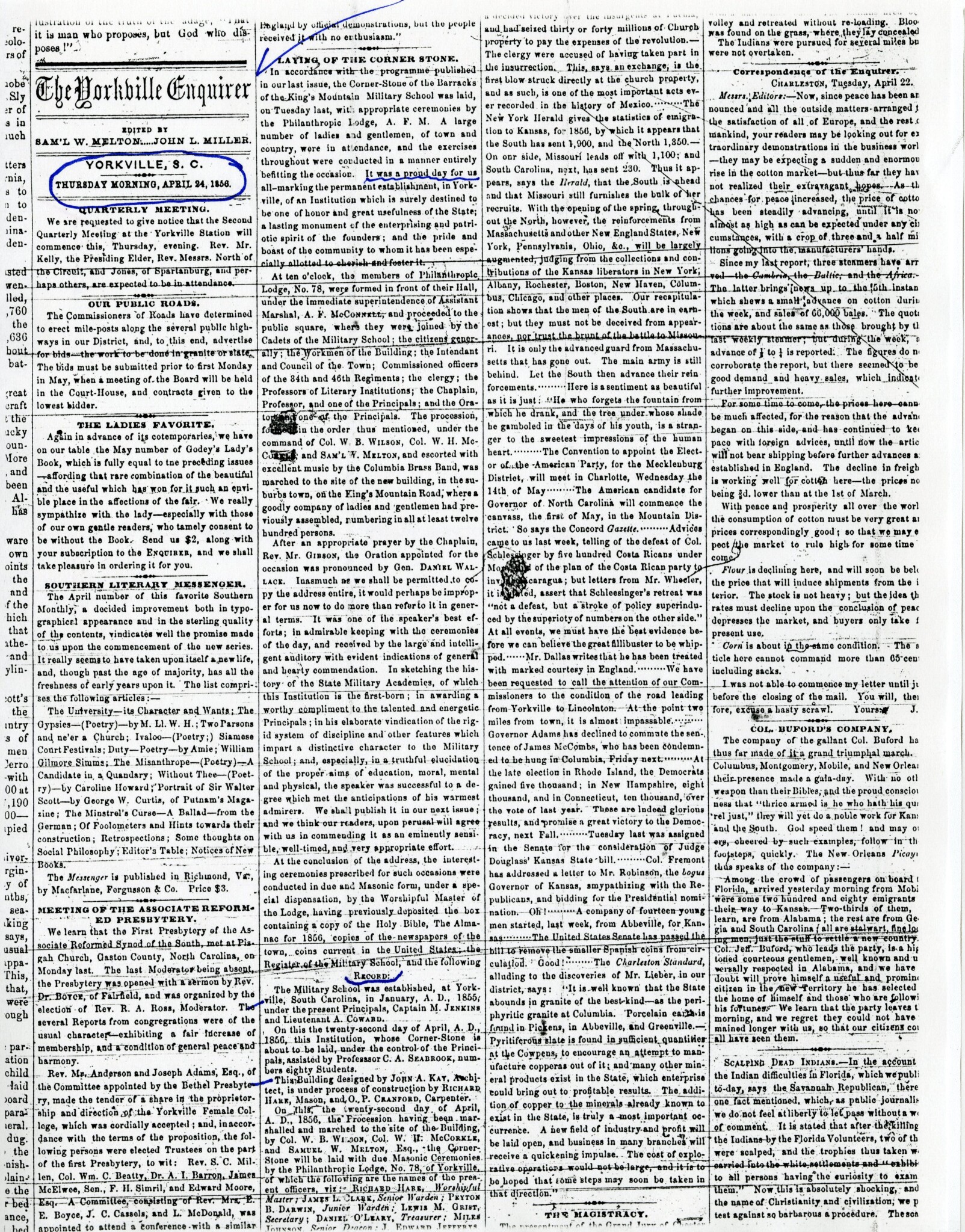




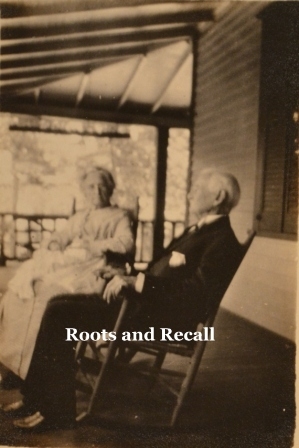




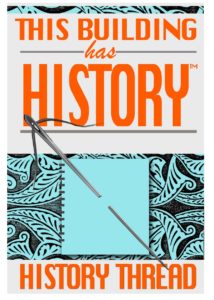



Hello,
I see that you have a color image of Gen. Micah Jenkins on your website. Do you own this image, or know the source of it? I would like to use it for a book.
Thanks,
Karen Stokes
I am sorry but R&R can not provide you legal reproduction rights to this image.
WB Fairey, R&R